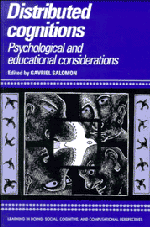Apart from my comments here at the top, this is taken directly from their site.
My comments: Call me an old fuddy-dud, but the heavy emphasis of these games on commercialism, television, "latest fashion trends", and obliterating of "the enemy" etc. sort of bothers me in an admittedly moralistic "this is the last thing we need" way. That said, there's much to be learned here, and I think there's a lot of potential for the sorts of things I'm interested within them -- things like recycling, picking up litter, reusing, starting conversations, getting diverse opinions (and SMASHING!!! them and their children forever!! -- oops, sorry...). What I secretly hope is that they're just exploiting the commercial resources until they come out their "I'm Ok; You're Ok -- let's be friend" game (and we'll all hold virtual hands).
Another note: I think there are problems with the CSS or HTML on their pages...
Pervasive Gaming from the It's Alive web page
Definition of "pervasive" [per-vã'sîv]: encompassing, always present.
Pervasive gaming means games that surround you, 24 hours a day, everywhere. When you walk down the street, you're walking through an adventure world draped on top of the real world, and people you meet may be characters in the same game you're playing. Enemy or friend, virtual lover, or an evil monster?
Location-based Gaming from the It's Alive web page
The pervasive games developed by It's Alive are location-based, which means that the player's physical location is mapped into the game. Game events can be triggered by a player's location, and players can interact with other people that are in the same area.
Matrix game platformThe Matrix game platform is a Java™-based server platform especially designed for pervasive games: massively multiplayer games with the real world as the game arena, and playing on multiple devices.
Supafly - a location-based virtual soap opera where intrigues, gang conflicts and romance are the tools of the trade for becoming a virtual celebrity.
In Supafly you can become a local celebrity by appearing in the online newspaper "Hype". But competition is fierce, and you must find allies among other players, belong to the right group, and follow the latest fashion trends in order to stay on top.
You start the game by creating your own character, fine-tuning both its' appearance and personality. Create your alter ego, or someone completely different. Your character will grow and develop a unique personality as you continue playing, and sometimes may not do exactly what you tell it to do.
Always with you
Your character stays in your mobile phone and - since the game is location-based - it follows you along wherever you go. As your trusty companion, your character will help you find nearby friends or maybe find a date.
Up close, you can interact with other players in many different ways. Chat, quarrel, kiss and make out - it's almost as in real life. You can also trade items with other characters - trade your boots for a cool pair of sunglasses, or try starting a career selling your home-made gear.
Your home is your castle
A quick command from your mobile phone - and your character leaves the phone and won't disturb you anymore. At an instant, your character instead enters its home on the Web. From the website you can read the latest gossip in the newspaper, and get new clothes or accessories for your character. You can also chat with other players - regardless if they're logged on to the website or connected from their mobile phone. The website also allows you to keep track of your friends, and check your statistics, so you can plan your next move to become a game celebrity, a Supafly.
A game for everyone
The game is accessible for anyone that has a mobile phone. You play using SMS messages, and with picture messaging you can even see how the characters look like. A WAP and J2ME version of the game is soon to come. The website provides a rich multimedia experience, so strong that the user will keep it in mind when playing the game on the mobile phone.
Operator benefits
Supafly is licensed to mobile operators, media companies and service providers, who in turn provide the game to its subscribers. The major benefits for the operator are:
- Drives traffic and revenues during off-peak hours.
- Marketing tool for addressing youth segment.
- Image booster with great PR value.
- Viral marketing gives quick penetration.
- Drives acceptance of positioning.
- Numerous possibilities for sponsorship and product placement of fashion brands and apparel in the game.
BotFightersBotFighters – a location-based mobile game where you design your robot on the game’s website, then battle against other players out on the streets.
The Game
BotFighters is the world's first and most successful location-based mobile game and it lets the users play via SMS using any standard GSM phone, or via a downloadable J2ME client. It has been launched in Sweden, Finland, Ireland and Russia, and is currently generating over 1.000.000 SMS per week.
BotFighters is an action game with a robot theme, and it takes place out on the streets in the real world. Players locate each other with their mobile phones, move physically to get within range and then duel by shooting at each other. Mobile positioning is used to determine whether the users are close enough to get a good hit.
The SMS dialogue is intuitive and quick to learn, and return messages from the game have a humoristic tone in endless variations. The J2ME client turns the phone into a “battle terminal” with an on-line radar screen, cross-hair aiming, and colourful feedback when destroying a target, or getting shot at.
On the BotFighters website, players can chat, upgrade their robots, buy weapons, view highscores, join competitions and get information on their current mission. The website is used for community building and to create an exciting game atmosphere but the actual gameplay is carried out on the mobile phone.
Special ForcesSpecial Forces (in production)
Game developed for Endemol International.
Special Forces is a both a TV show and a game, developed by It’s Alive and Endemol International (www.endemol.com), world famous for international docusoap format ”Big Brother”.
With a character created on the Special Forces website, the gamer enters an individual or group shoot-out competition that takes place in streets, parks, schools, at work 24 hours a day, seven days a week. The main goal of Special Forces is to survive as many days as possible and obliterate the enemy. The gamer that keeps his character alive longest throughout the duration of the game wins.
The most important tool and best friend in the game is the mobile phone. By using location based technology, the gamers use their mobile phones to scan the environment searching for the location of other gamers.
X-FireGame developed for Channel 4 UK in 2001.
Mobile "shoot-em-up" based on a TV show. The game's aim was to find other players in a virtual game world, and battle with them. It was based on the TV show "X-Fire", a paintball action show, and included the same players, weapons etc from the TV show.







